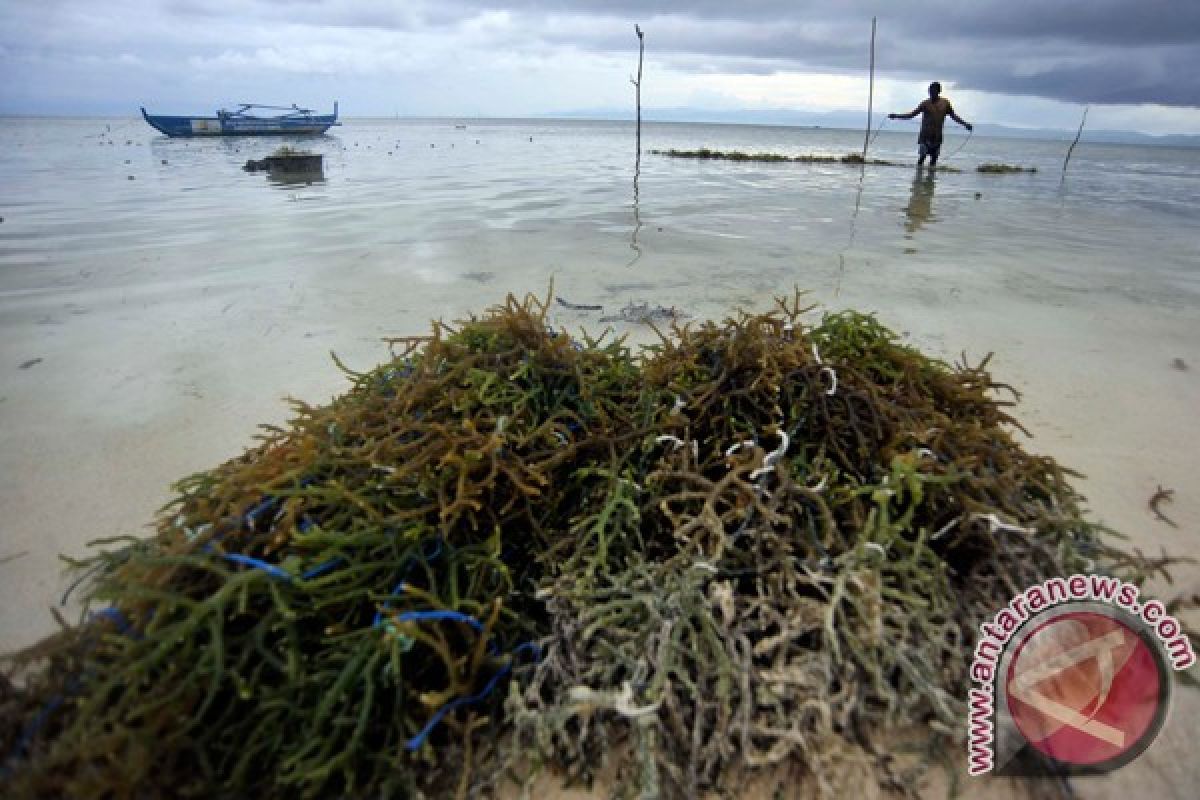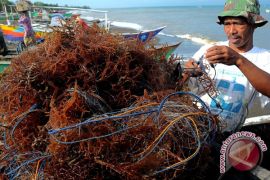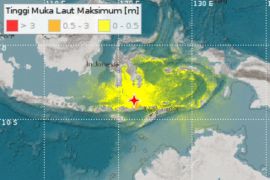"We have so far been selling our dried seaweed in the form of powder to the buyers."Jakarta (ANTARA News) - Supported by natural conditions, many areas in Southeast Maluku district, in particular and Maluku province, in general have great potential for seaweed cultivation.
Therefore, the local farmers have been encouraged to develop seaweed cultivation because of many potential markets for the commodity and the presence of a seaweed processing factory.
Maluku Trade and Industry Office Chief for Foreign Trade affairs, Elvis Pattiselanno, said in the provincial capital of Ambon recently that the central government has promised to provide the seaweed processing factory in Tual, Southeast Maluku, with a laboratory.
"The central government, through the Ministry of Trade and Industry has given the green signal to provide a seaweed laboratory by 2013," Pattiselano said.
According to him, Trade and Industry Deputy Minister Alex Retraubun visited the seaweed processing factory in Southeast Maluku three times this year and has promised that the central government would provide the factory with a laboratory.
"We hope that the commitment of the deputy minister of trade and industry will materialize in 2013," Pattiselanno noted.
He acknowledged that most of the seaweed produced in Southeast Maluku has been exported to buyers in Surabaya, East Java.
Meanwhile, Southeast Maluku Eronel Farmers and Fishermen Cooperative Chairman, U Renrusun also confirmed that the central government has promised to provide the seaweed laboratory.
Renrusun said that the laboratory would be used to improve the seaweed standardization in the district.
"We are in dire need of a laboratory to help us improve the standardization and quality of the seaweed that we produce. The central government`s promise is good news for us," Renrusun noted.
Further, he added that the farmers in Southeast Maluku currently develop the dried seaweed into ready-to-use material in the form of powder.
"We have so far been selling our dried seaweed in the form of powder to the buyers," Renrusun said, explaining that the processing of dried seaweed into powder was at the instruction of Deputy Trade Minister Alex Retraubun.
He pointed out that in the future the local farmers would be able to export the dried seaweed in the form of powder, following the presence of two seaweed processing factories in the district.
According to him, seaweed in the form of powder is much more expensive than dried seaweed.
"We have been selling the dried seaweed at a price of Rp 8,000 per kg but the powder form secures Rp 150,000 per kg," Renrusun noted.
According to the International Labor Organization (ILO) on its website, www.ilo.org/jakarta, seaweed is a major commodity in Maluku because it has a ready market and can be sold outside the province due to its good demand in both, national and international, markets.
Besides, technical know-how and inputs required to start seaweed cultivation are comparatively low and harvesting can be done after every six weeks.
"It can be cultivated round the year barring few months during the east monsoon when productivity is relatively low. It can also contribute significantly to the reduction of poverty levels among the lower-middle classes of the coastal community," according to the ILO.
Nearly all the districts of the Maluku province have enormous potential for cultivating seaweed and it can therefore, help in reducing regional disparities within the province.
Therefore, UNIDO-ILO Pelagandong project and ILO-EAST project jointly organized a workshop early last year in Ambon to discuss the current status of seaweed and the way forward to achieve targets by the year 2014 with stakeholders of seaweed in Maluku.
Main objectives of the workshop were-
- To deliberate on plans and milestones set by the Maluku province government for development of the seaweed sector (vision, mission, work plan, etc.).
- To develop strategies and agree on future action plans for achieving targets and milestones.
- To discuss issues related to production, post harvest management, processing, marketing, access to finance, capacity building, to identify key stakeholders and map their roles and responsibilities in development of the seaweed sector in the Maluku province.
- To strengthen coordination among stakeholders in the seaweed sector.
- To launch the seaweed module developed by the Fishery Department for the ILO-EAST Project.
The Marine Affairs and Fisheries Ministry�s ambition is to not only turn Indonesia into a top global fish supplier but also the world`s biggest seaweed producer.
According to the ministry, Indonesia is striving to produce 10 million tons of seaweed per year by 2015, making it the number one producing country, replacing the Philippines.
Indonesia, a maritime country having the world`s second longest coastline, has major potential in the production of seaweed, which is relatively easy to cultivate as it takes only 45 days to fully grow.
Seaweed is in very high demand in the international markets, especially as a raw material for the production of food, pharmaceuticals and cosmetics. Seaweed is also good fertilizer and is currently under consideration as a potential source of bioethanol.
(T.O001/INE/KR-BSR/A014)
Reporter: by Otniel Tamindael
Editor: Priyambodo RH
Copyright © ANTARA 2012










